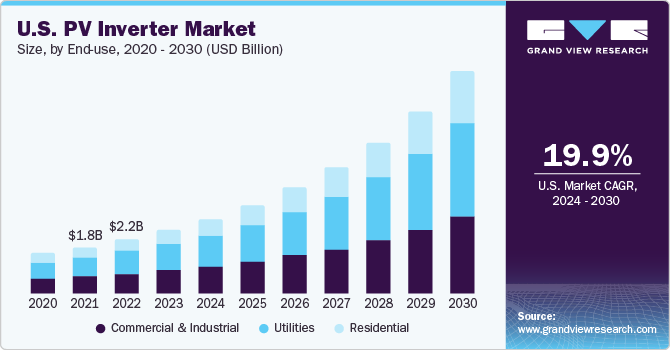# European vs Asian Solar Inverter Manufacturers: Key Pros, Cons, and Market Trends
The global solar inverter market has undergone a seismic shift over the last two decades. Once dominated by European giants like SMA, Fronius, and Schneider Electric, the industry now faces fierce competition from Asian manufacturers, particularly those based in China. This article dissects the strengths, weaknesses, and evolving dynamics between European and Asian solar inverter manufacturers, providing actionable insights for businesses and consumers navigating this critical renewable energy component.
The Rise of Asian Inverter Manufacturers: Disrupting a European Stronghold
A decade ago, European and U.S. brands like SMA, Fronius, and Outback Power commanded the solar inverter market. Their products were synonymous with reliability, backed by decades of R&D and stringent safety standards. However, the explosive growth of solar PV installations in the 2010s created demand for affordable inverters, opening the door for Asian manufacturers.
Chinese companies entered the fray by reverse-engineering European designs, initially producing lower-cost alternatives with compromised quality. These "Tier 2" inverters undercut European prices by up to 70%, forcing established players to innovate while driving global price reductions. Today, premium Chinese inverters cost roughly 75% of their European counterparts, narrowing the quality gap significantly.
Price vs Performance: A Side-by-Side Comparison
| Brand | Origin | Capacity (kW) | Efficiency | Price (£) |
|---|---|---|---|---|
| Fronius Primo | Austria | 3.8 | 96.70% | 1,060 |
| SMA Sunny Boy | Germany | 3.1 | 97.20% | 1,024 |
![solar inverters comparison, European Asian manufacturers, solar energy technology]
| Voltronic Infini | China | 3 | 93% | 1,100 |
| MakeSkyBlue | China | 4 | 93% | 529 |
Data highlights European efficiency leadership but Asian cost advantages.
Key Takeaways:
- European Inverters: Command a 3–4% efficiency edge (e.g., SMA Sunny Boy at 97.2% vs Chinese averages of 93%).
- Asian Inverters: Offer comparable hybrid models at 40–50% lower prices (e.g., MakeSkyBlue’s 4kW hybrid inverter at £529 vs Outback Power’s £1,390).
Core Advantages of European Inverter Manufacturers
1. Unmatched Safety and Compliance
European inverters adhere to rigorous standards like NEC 2014, featuring:
- Built-in safety mechanisms: DC disconnect, reverse polarity protection, and ground fault protection.
- Grid compliance: Automatic shutdown during outages to protect utility workers.
2. Technological Innovation
Pioneering transformerless inverters eliminated bulky components, reducing costs and improving efficiency. European brands also lead in:
- Multi-MPPT systems: Optimize power output for complex installations (e.g., shaded roofs).
- Smart grid integration: Real-time Wi-Fi monitoring and remote control capabilities.
3. Long-Term Reliability
Decades of field testing ensure European inverters withstand harsh conditions, with lifespans often exceeding 15 years.
Asian Manufacturers: Closing the Gap
1. Cost Efficiency
Chinese brands leverage lower labor costs, localized supply chains, and simplified testing protocols to slash prices. For example:
- Containment strategies: Housing inverters indoors (vs weatherproof European models) reduces manufacturing costs.
- Aggressive pricing: A 3kW Chinese inverter averages £439 vs £1,024 for a German equivalent.
2. Rapid Technological Adoption
While early models lagged in quality, brands like Huawei and Sungrow now rival European efficiency (93–95%) while introducing hybrid and battery-ready models.
3. Market Agility
Asian manufacturers quickly adapt to regional demands, such as high-capacity inverters for utility-scale solar farms.
Critical Challenges for Both Regions
European Struggles
- Price pressure: SMA’s market share dropped from 33% in 2010 to 15% in 2023 due to Asian competition.
- Regulatory complexity: Compliance with diverse grid codes (e.g., Germany’s VDE-AR-N 4105) inflates R&D costs.
Asian Limitations
- Quality perception: Despite improvements, brands like Cinco still face skepticism in premium markets.
- Weak after-sales networks: Limited service infrastructure outside Asia impacts customer trust.
The Distribution Battle: How Channels Shape the Market
European Distribution Realities
- Inventory glut: EMEA regions held 27GW of excess inverter stock in 2022, forcing distributors like BayWa r.e. to prioritize high-margin brands (e.g., Huawei, Fronius).
- Deferred payments: Manufacturers increasingly demand payments within six months, pressuring cash-strapped distributors.
Asian Penetration Strategies
- Partnerships with integrators: Companies like Deye and Growatt collaborate with installers to offer turnkey solutions.
- Price wars: Chinese hybrids undercut European models by 30–40%, appealing to cost-sensitive markets like the U.S. and Australia.

![8 Critical Factors When Choosing a Wire Coil Wrapping Machine [2025 Buyer’s Guide] 8 Critical Factors When Choosing a Wire Coil Wrapping Machine [2025 Buyer’s Guide]](https://i0.wp.com/www.fhopepack.com/blog/wp-content/uploads/2023/01/Master-coil-stretch-wrapper-zt.webp?w=1024&resize=1024,1024&ssl=1)


